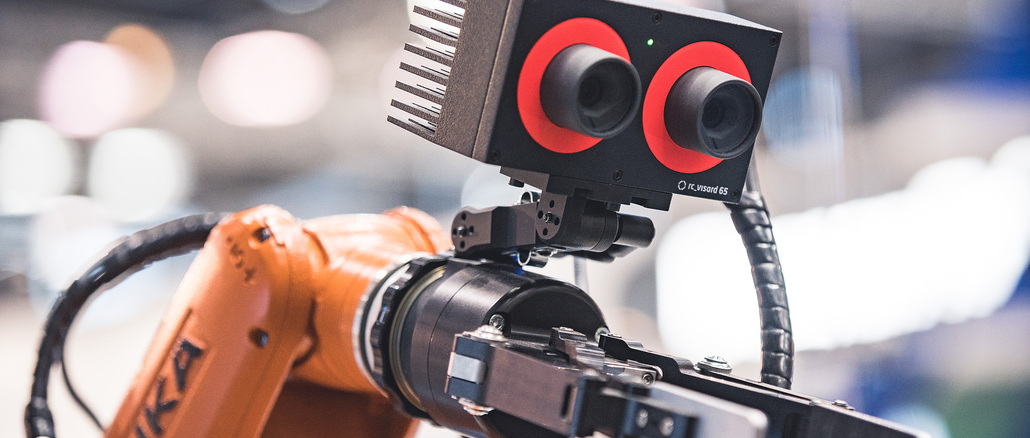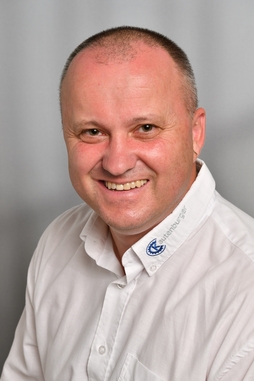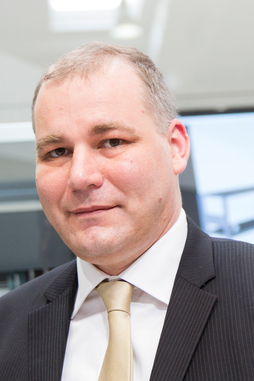
Whether furnace bricks, pallets or tailored blanks: robotics and automation are finding their way into more and more areas of industry, small and medium-sized businesses and the skilled trades. Parallel to this, “seeing” robots are experiencing increasing demand. Cameras make robots flexible. End customers can thus cope with the enormous diversity of variants in their production.

They could also be preliminary and end products made of metal, but let’s take a look at a completely different industry: “There are up to 100 different variants of kiln bricks,” explains Christian Kautenburger, Managing Director of Kautenburger GmbH in Saarland. In cooperation with the Munich-based company Roboception and the Augsburg-based automation specialist Kuka, the medium-sized company has developed a solution for a Spanish customer to stack and depalletize a wide variety of kiln bricks on kiln cars and pallets.
Software modules and sensors from Roboception and robots from Kuka were used for this purpose. “At first glance, the stack of kiln bricks looks very orderly. But the transport route to the kiln and the shrinkage behavior of the bricks in the kiln make the use of camera technology necessary because the position of the bricks cannot be defined precisely enough for the robot alone,” Kautenburger explained.
Camera technology as the basis for machine learning
As is so often the case when it comes to robotic solutions, millimeters matter. The suction pad must be placed exactly in front of the stone so that the robot can grip it securely. “This example shows the advantages of using cameras on the robot,” adds Dr. Michael Suppa, CEO and co-founder of Roboception.
It gives an outlook on how relevant camera technology is for the world of automation. “We can use it to increase throughput and safety during handling. The robot becomes more flexible. Every movement no longer has to be programmed down to the smallest detail.” Last but not least, the use of camera technology is the basis for machine learning, the most relevant field of artificial intelligence for Roboception.

© Roboception GmbH
Automation attractive even for micro-enterprises
“The system consisting of camera and robot was very easy for us to put into operation. This simplicity naturally helps more inexperienced users from SMEs to think more about automation,” says Kautenburger. His customers are currently facing two challenges: Cost pressure and a shortage of skilled workers. Automation helps to bring production back to the home country and to be able to produce economically there. “I observe that even the smallest companies, for example in the field of machining or component deburring, are considering the use of robots. The seeing robots are the goal of many people.
Kuka
Kuka is an internationally active automation group with sales of around €2.6 billion and around 14,000 employees. The company is headquartered in Augsburg. As one of the world’s leading suppliers of intelligent automation solutions, Kuka offers customers everything from a single source: from robots to cells to fully automated systems and their networking in markets such as automotive, electronics, metal & plastic, consumer goods, e-commerce/retail and healthcare. (Status: 31.12.2020)
Web:
www.kuka.com
